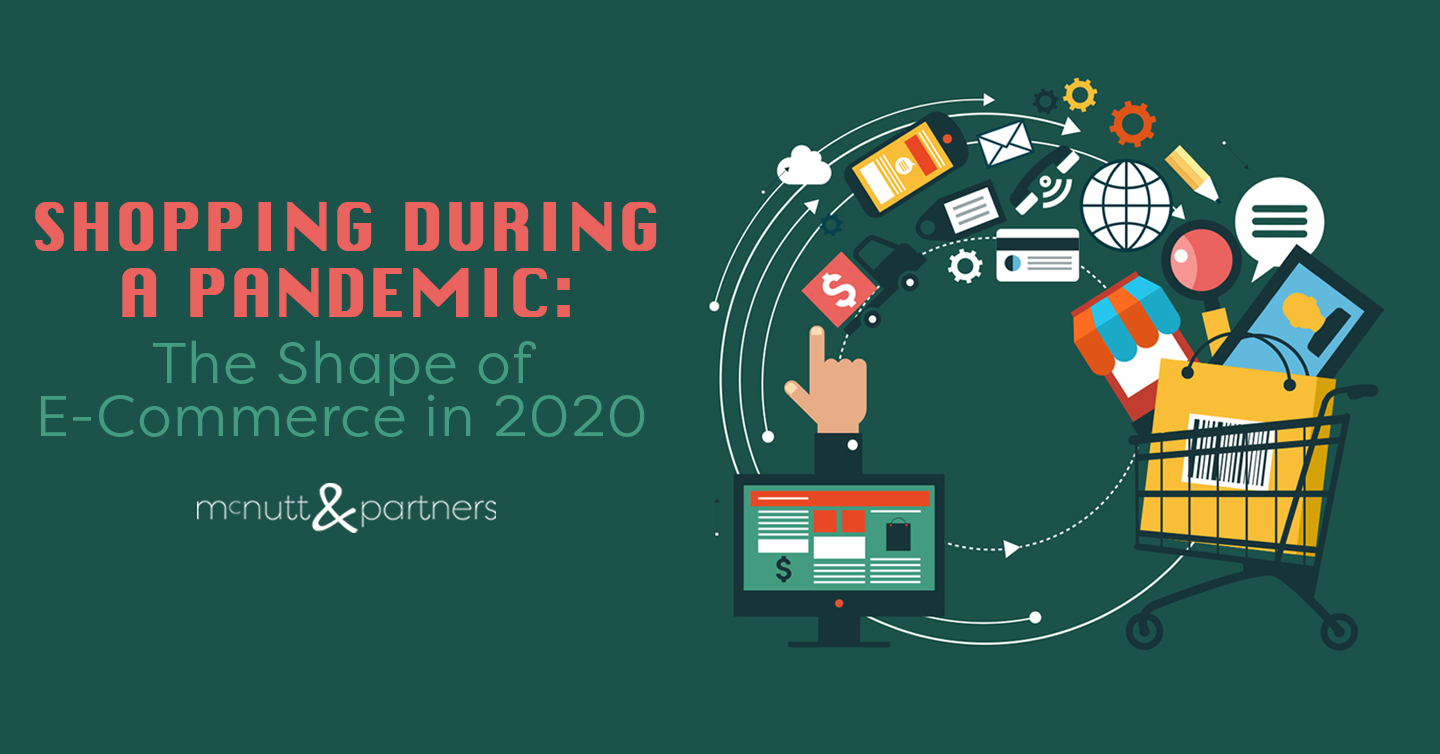Kicking your feet up with your laptop, iPad or smartphone and knocking out all of your holiday shopping in one sitting is a luxury. It wasn’t always the case that we could make purchases in our pajamas from the privacy of our homes, and we have e-commerce to thank for that. In 2020, the line between shopping online as a luxury and shopping online as a necessity has become a bit more blurred. As we’ve navigated a global pandemic, e-commerce has skyrocketed—and we have the statistics to prove it. Let’s take a closer look at the shape of e-commerce in 2020.
Five years ahead of schedule.
The rate at which a larger volume of consumers have shifted from physical shopping to online shopping has accelerated approximately five years thanks to the pandemic. (CircleID)
Start of the pandemic stat.
In the United States, more money was spent online in April and May 2020 than the last 12 Cyber Mondays combined! (SocialMediaToday). This was during the time that most of the country was first under some sort of lockdown or quarantine.
A record-shattering Cyber Monday.
Cyber Monday was THE biggest U.S. e-commerce day ever. Retailers garnered $10.84 billion on Cyber Monday 2020 compared to last year’s $9.4 billion. (Adobe Experience Cloud)
Early cyber shopping trends.
Though Cyber Monday 2020 was a record-setting day for e-commerce, it still did not meet anticipated spending projections, which were between $10.8 and $12.7 billion. With e-commerce being an extremely accessible option, experts suspect that this may be due to the fact that shoppers started taking advantage of holiday sales that were happening as early as October. (Business Insider)
Brands prioritizing mobile commerce.
Another trend worth mentioning when considering the shape of e-commerce in 2020: mobile commerce. In 2019, 53 percent of e-commerce sales happened on mobile devices. By the end of 2021, that percentage is expected to be around 73 percent. Many brands are now designing their e-commerce platforms with “mobile-first” in mind. (CircleID)
Social commerce gaining traction.
A few stats to consider: in a recent survey, one in four companies was currently selling its products/services on Facebook. In addition, the same survey showed that brands with at least one active social media account make 32 percent more sales than online retailers who are not active on social media. (ecommerce guide) This type of selling, known as social commerce, is another type of online shopping.
A shift in consumer expectations.
Take note! This is important. Sixty-eight percent of consumers say the pandemic has heightened their expectations of retailers’ digital offerings. This includes being able to make online purchases. (SocialMediaToday)
Wrapping up 2020 and beyond.
The future is not only bright for e-commerce. The future is e-commerce! E-commerce sales are expected to reach more than $4 trillion in 2020. Jumping ahead to a little ways down the road, experts predict that more than 95 percent of all purchases will be conducted online by 2040. (ecommerce guide)
The bottom line.
E-commerce was already slated to grow and keep growing. But thanks to the pandemic, e-commerce in 2020 has not only grown, but has set new standards for how our society conducts business.
It’s important for brands to note this trend, as offering e-commerce options may now be expected of businesses sooner than they originally thought in order to appease consumers and keep up with the competition.
McNutt & Partners is a full-service advertising and digital marketing agency. Contact us today for your marketing needs! Call 334-521-1010, or visit our contact page.

